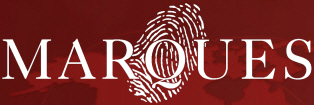|
In many countries, there is no official register for copyrights. Unlike
patents, registered designs or trade marks, there is no need to file an
application or take any official action. A copyright comes into effect
immediately, as soon as something that can be protected is created and
"fixed" in some way in a medium of expression such as paper, film, sound
recording, or an electronic format such as the Internet. Examples of some of
the types of works that can be the subject of copyright protection are the
following;
-
original literary works, e.g. novels, instruction manuals, computer
programs, lyrics for songs, articles in newspapers, some types of databases,
but not names, trademarks, phrases or slogans.
-
original dramatic works, including choreographic works of dance or mime;
-
original musical works;
-
original artistic works, e.g. paintings, engravings, photographs,
sculptures, collages, works of architecture, technical drawings, diagrams,
maps, logos;
-
published editions of works, i.e. the typographical arrangement of a
publication;
-
sound recordings, which may be recordings on any medium, e.g. tape or
compact disc, and may be recordings of other copyright works, e.g. musical
or literary;
-
films, including videos; and
-
broadcasts
A copyright protects the way an idea is expressed in a piece of work, but it
does not protect the idea itself. |




